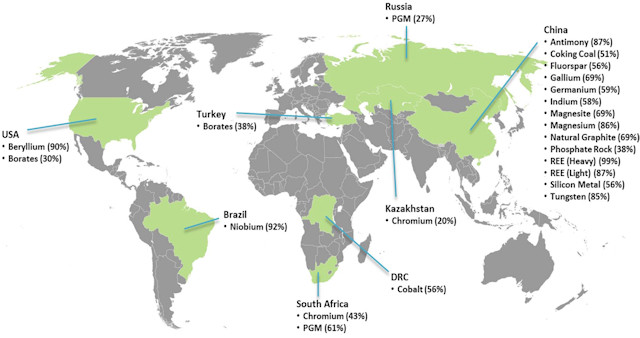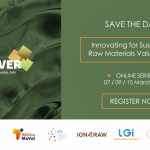Raw materials, which are essential elements in today’s industrial production, are crucial for the sustainable functioning of our economy. Used in microprocessors, smartphones, LCD screens, batteries and low energy light bulbs, raw materials are an intrinsic part of our daily lives and the industry demand is growing at impressive rates. Strategic economic sectors in Europe, such as the automotive, aerospace and renewable energy industries, highly depend on them.
They are called critical when their high economic importance is combined with a high risk associated with their supply. This is mainly due to the fact that a great share of the worldwide production is concentrated in a few countries. For example, China currently supplies 49% of Europe’s critical raw materials and Russia supplies 46% of the EU’s demand for palladium, one of the most commonly used platinum group metals that has yet to be substituted, and is both mostly and widely used in the automotive industry.
Adding to the resource scarcity and the geopolitical concerns, the extraction and processing of some raw materials has significant environmental impacts. All of these factors have both economic and social effects on our society that need to be addressed.
The European Commission drew a list (to be updated during Raw Materials Week 2017) of these Critical Raw Materials, now amounting to the following twenty: Antimony, Beryllium, Borates, Chromium, Cobalt, Coking coal, Fluorspar, Gallium Germanium, Indium, Magnesite, Magnesium, Natural Graphite, Niobium, Platinum Group Metals (PGMs), Phosphate Rock, Rare Earth Elements (Heavy), Rare Earth Elements (Light), Silicon Metal, Tungsten.
Today’s challenge for dependent countries, and Europe in particular, lies in securing their supplies at affordable prices to maintain manufacturing industries and supporting the necessary development of renewable energy technologies in a sustainable way. This will also have a positive impact on employment.
With at least 30 million jobs in the EU dependent on access to raw materials, Europe has set ambitious goals to turn this trend around. How? By proposing concrete targets to be achieved by 2020 to reduce dependency on imported raw materials, to replace rare materials with substitutes and to set up innovative actions for exploration, extraction, processing and recycling.
First published on the PROMETIA websiteComments are closed.





 The SCRREEN3 project has received funding from the European Union's Horizon Europe Research and Innovation Programme under Grant Agreement N° 101138060
The SCRREEN3 project has received funding from the European Union's Horizon Europe Research and Innovation Programme under Grant Agreement N° 101138060